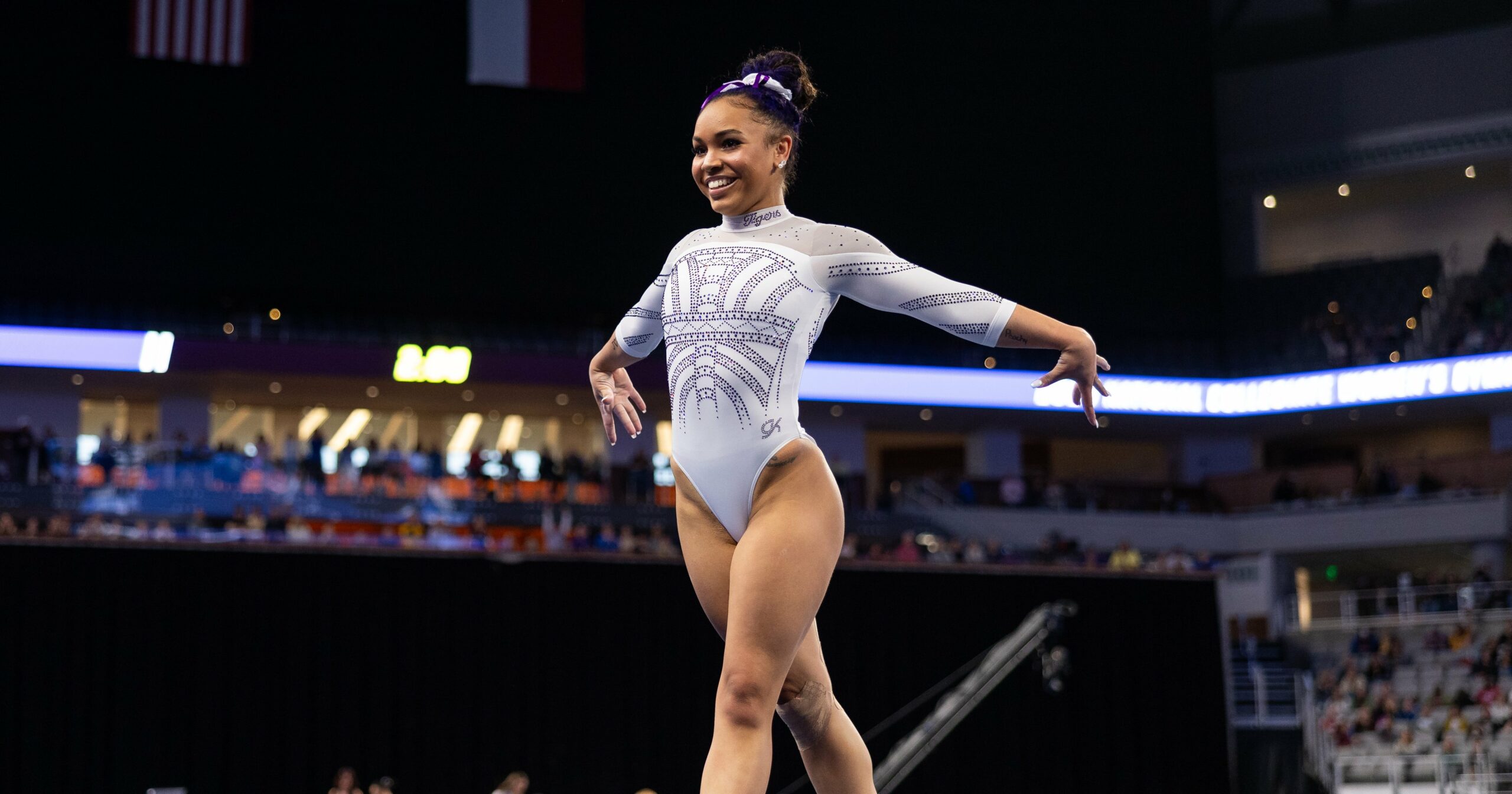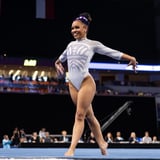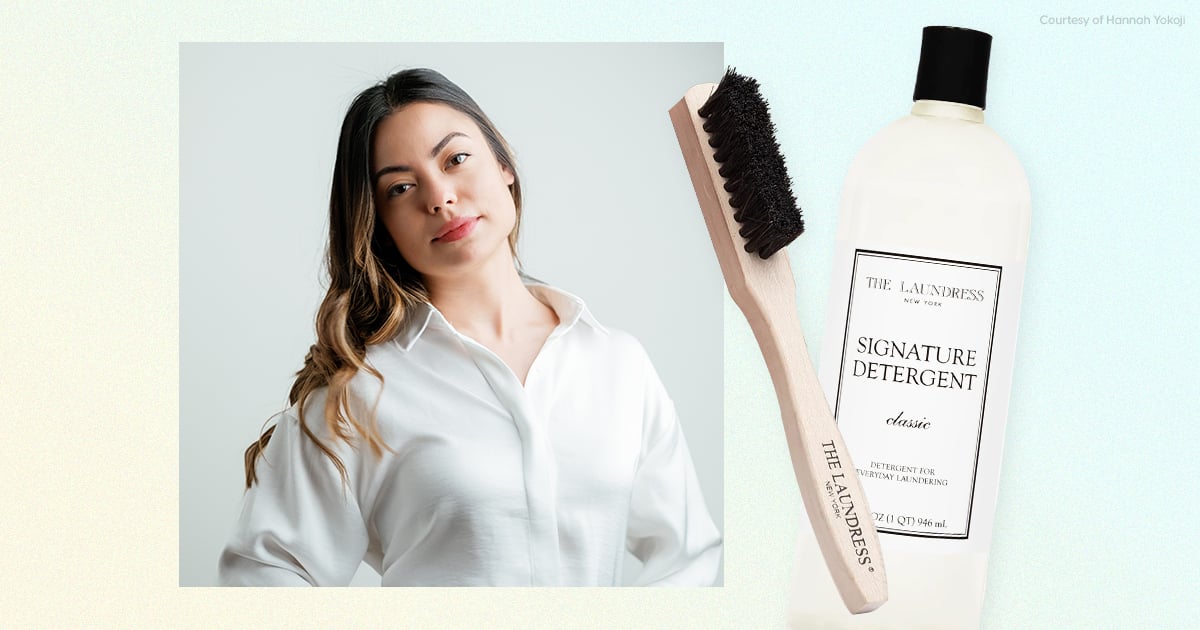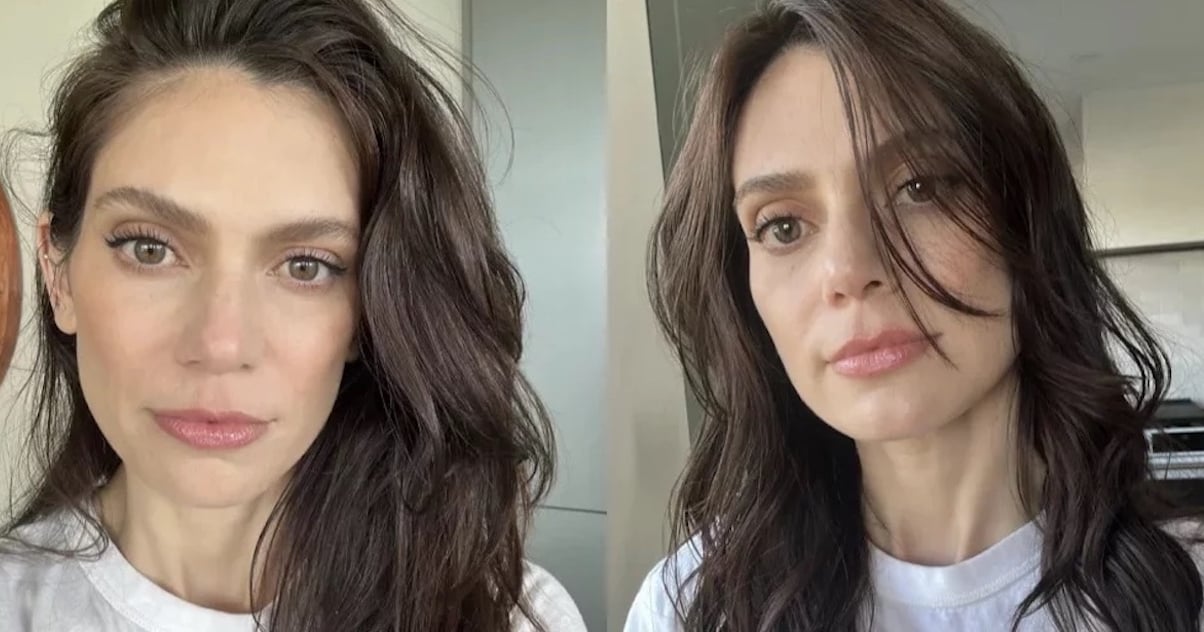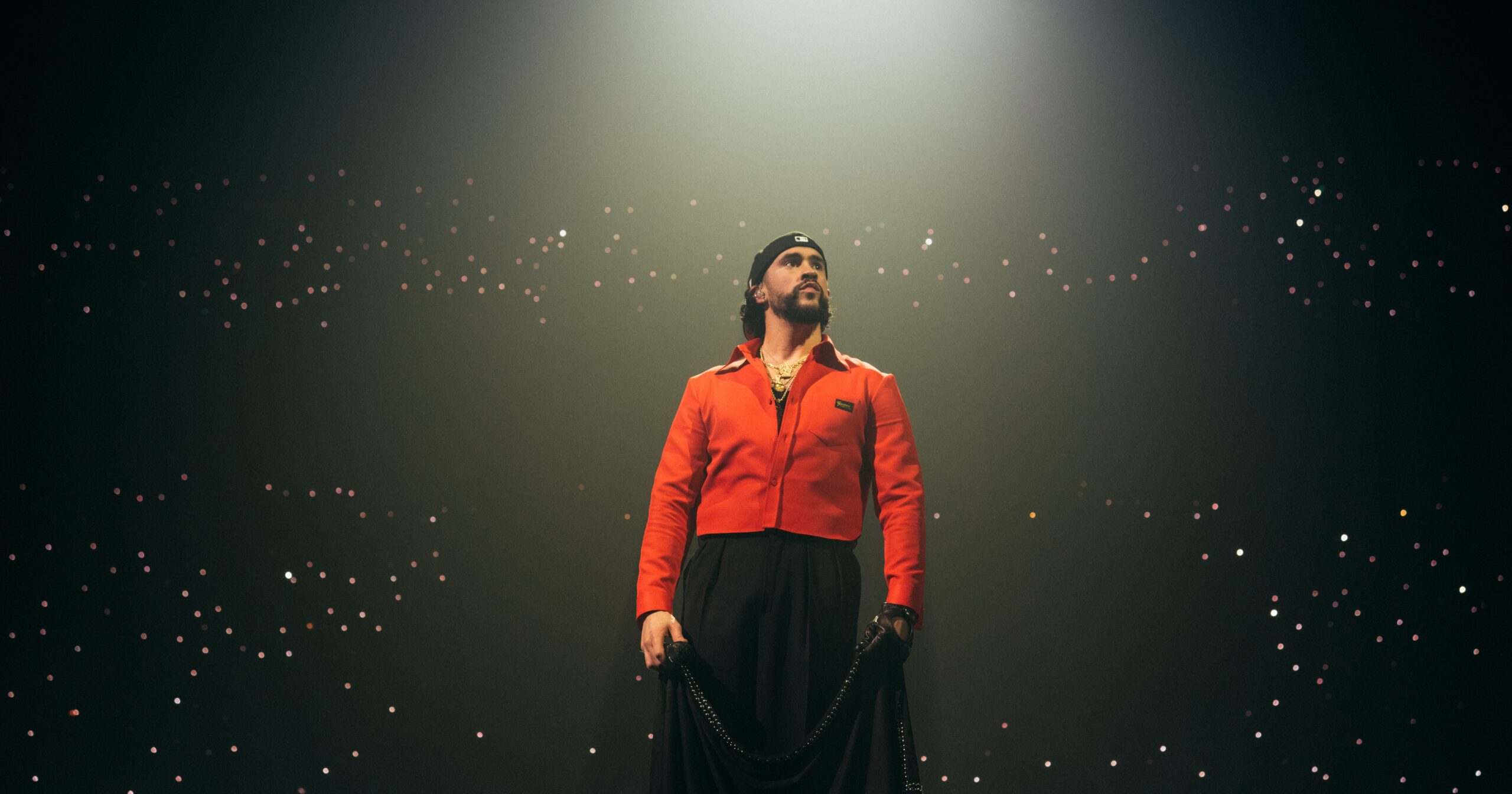The leotards in women’s sports are playing a dangerous game. As female athletes continue to break down barriers and rake in record-high ratings, their outfits seem to grow smaller and smaller. It’s a trend that appears to affect several branches of women’s sports – from swimming to track-and-field – but it’s sparking the most conversation in women’s college gymnastics.
“Why do the college gymnastics girls not have to wear leotards that fit, and why don’t they have to wear GK briefs under their leo?” asked content creator and former gymnastics coach BayouBrandi on TikTok, referring to the high-cut briefs often worn under leotards. Commenters said they’d also noticed this progressive sexualization in women’s sports, noting that there’s a difference between an outfit you pick out yourself (like a bikini at the beach), and an outfit designed for you. “I’ve literally opted out of certain sports [because] of how exposing the uniform is,” one commenter wrote. In fact, a study published in the journal Sport, Education and Society found that 75 percent of the women surveyed had seen girls drop out of school sports due to concerns about uniforms or body image.
While we support women in whatever they feel most comfortable wearing, personal autonomy is a component that seems to be missing here. In the NCAA, leotards are primarily designed by the individual coaches and their leotard reps, according to College Gym News. Assistant coaches keep an eye on trends and dig up inspiration on social media, possibly talking to the athletes about their preferences. But otherwise, NCAA leotard regulations are relatively vague, saying that “a student-athlete must wear a one-piece leotard and is allowed to wear any undergarments that are the same color of the leotard or are skin tone in color.”
When you consider that these young women athletes lack any significant agency over what they wear (beyond a casual conversation with their assistant coach), the discourse around their leotards feels especially one-sided. And as former college gymnast Natalie Wojcik pointed out in a recent TikTok, the leotards aren’t the only issue. Her video highlighted a slew of comments she had received on social media, all of which discussed the skimpiness of her leotard rather than her athletic prowess. “Being a woman in sports is hard sometimes,” she captioned the post. “I am a 23 year old woman. My body is different than when I was a kid,” she replied to another comment, remarking that not all leotards have changed, but the bodies wearing them have.
On an Olympic level, women’s leotards have also been used as a political statement. In 2021, German gymnasts wore full-length unitards to the Tokyo Games in order to push against the rampant sexualization in women’s gymnastics. “We want to make sure everyone feels comfortable and we [want to] show everyone that they can wear whatever they want and look amazing, feel amazing,” said German gymnast Sarah Voss. This push for empowerment was especially powerful given gymnastics’s history of sexual abuse, setting the tone for more female athletes to wear what they truly feel best in.
Beyond gymnastics, in 2021, the Norwegian women’s beach handball team was fined for refusing to play in bikinis, eventually causing the rule to change. And more recently, the US track-and-field world had a polarizing leotard moment after some of the kits for the 2024 Paris Olympics went viral. While the male uniform included a tank and briefs, the featured option for the women’s uniform was essentially a leotard with little-to-no coverage around the gusset. “Wait my hoo haa is gonna be out,” commented Olympian Tara Davis-Woodhall. The long jumper has since stated at the Team USA Media Summit that the leotards don’t looks as drastic in person, plus there are other options for women athletes to wear, including shorts – but that doesn’t take away from the larger conversation.
“I’ve never been consulted in the design,” Davis-Woodhall said during a roundtable interview including PS at the media summit in April. “For the next Olympics, let’s go ask the athletes. How do you feel when you compete in our uniforms?” Davis-Woodhall added. “All women’s bodies are different and I say the same thing for men. Let’s make the uniforms for the people instead of for the views of ‘Oh, this is gonna look cool on TV.’ Well, that might not look cool on my body. So let’s just adapt to the athletes instead of a show,” she told the group.
Whether or not you believe the outfits in women’s sports are getting smaller, athletes are there to compete, and their uniforms should serve as an asset, not a point of discomfort. We can start by including athletes in the design process in a more meaningful way, listening to their preferences (be it tinier leos or full-on unitards), so that they can perform to the best of their ability. All women in sports deserve to be dressed like champions, but that can’t happen until the athletes actually feel comfortable in the outfits they’re competing in. And yes, for some athletes that might mean adding a little more coverage.
– Additional reporting by Alexis Jones
Chandler Plante is an assistant editor for POPSUGAR Health & Fitness. Previously, she worked as an editorial assistant for People magazine and contributed to Ladygunn, Millie, and Bustle Digital Group. In her free time, she overshares on the internet, creating content about chronic illness, beauty, and disability.
Alexis Jones is the senior health and fitness editor at PS. Her areas of expertise include women’s health and fitness, mental health, racial and ethnic disparities in healthcare, and chronic conditions. Prior to joining PS, she was the senior editor at Health magazine. Her other bylines can be found at Women’s Health, Prevention, Marie Claire, and more.
